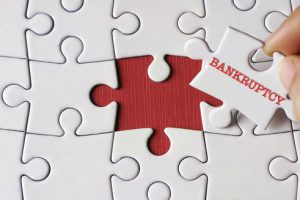The Financial Comeback Trail

Abraham Lincoln, one of Illinois’ favorite sons, declared bankruptcy in 1833.
In his early 20s, Lincoln worked various jobs in Springfield, and that work included employment at a local general store. When the establishment closed, the young and enterprising Lincoln decided to open his own store in New Salem with a business partner. The two men purchased other stores’ inventories on credit to fill their shelves, a risky strategy that backfired when sales dipped at the New Salem establishment. Lincoln later recalled that the store “winked out,” and after his partner died, Lincoln was liable for about $1,000 in debts, an astronomical sum at the time.
Since he filed before the modern Bankruptcy Code, Lincoln took seventeen years to repay the debt in full; he also lost his horse and surveying gear, which were his only assets.
What If It Were Today?
Today, debtors can choose between Chapter 7 and Chapter 13, and either one would have most likely protected Lincoln’s assets and shortened the debt repayment period. Furthermore, during repayment, the hypothetical Lincoln would probably not receive any threatening letters or phone calls, because of the automatic stay.
In both liquidation and repayment bankruptcies, most assets are exempt up to certain levels, including:
- – Houses,
- – Vehicles,
- – Retirement accounts,
- – Personal property, and
- – Cash on hand.
Qualified Chapter 7 debtors normally receive debt discharge (debt forgiveness) orders in only a few months.
Depending on their income, Chapter 13 debtors have either three or five years to repay their debts, and after that debt repayment period, any remaining unsecured debts, like credit card and medical bills, are discharged. Before the repayment period begins, debtors propose a monthly debt consolidation payment that goes to satisfy all secured debts, like home mortgage arrears or past-due car payments; during the repayment period, moneylenders can only take adverse action with special permission from the bankruptcy judge.
Recovery from Bankruptcy
Although it is not much worse than foreclosure or repossession, bankruptcy is normally the worst possible blow to a credit report; Chapter 13s usually fall off after seven years and Chapter 7s normally take ten years. In other words, bankruptcy gives consumers fresh starts and places them back at the starting line, and there are a few ways to move forward thereafter.
First, take a hard look at why the filing was necessary. Typically, there was a serious financial storm, such as a sudden illness or layoff, and saving a little bit each month goes a long way towards weathering these storms. If poor spending habits contributed, and they sometimes do, these issues must be dealt with. Second, get a credit card after bankruptcy. Charge something every month, and pay off most of the balance before the due date. This habit creates a good payment history that raises your credit score. Third, pay secured debts on time. These payments are normally reported to the credit bureau, so this is another way to build up a solid payment history.
If they take full advantage of their fresh starts, most bankruptcy debtors may not even remember that they filed after their petitions fall off their credit reports.
Go with Zealous Lawyers
At the Bentz Holguin Law Firm LLC in Chicago, we are committed to consumers in Illinois and Indiana. Contact us today for a free consultation.
Resource:
quod.lib.umich.edu/l/lincoln2/5250244.0001.001/1:13.1?rgn=div2;view=fulltext


